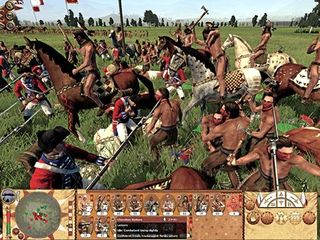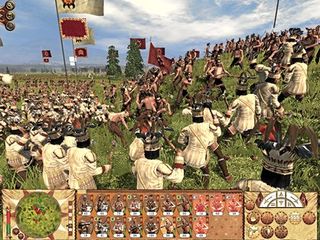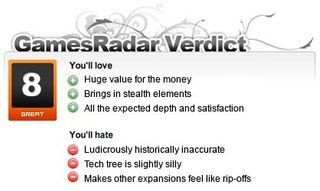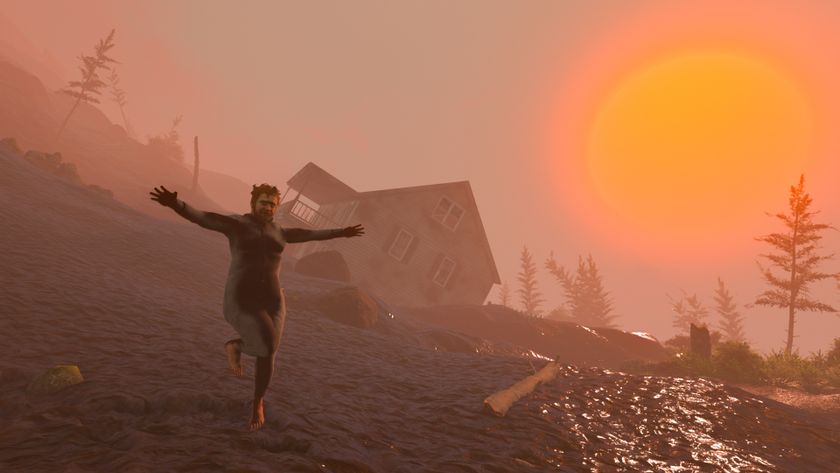Something about this Empire adjunct has been bothering us since we installed it, and we think we’ve just figured out what that something is. The campaign premise is complete buffalo balls.

It’s 1787, and here we are, chief of the lowly Iroquois, trying to figure out the best way to conquer half of the vast wilderness that is North America. If we’d chosen to play as the Plains or Pueblo Indians, the Cherokee or the Huron, we’d be doing exactly the same ludicrous thing. By focusing this download-only expansion pack on five Native American tribes and building ambitious expansionist targets into the victory conditions, Creative Assembly have created an add-on that piddles on the buckskin moccasins of history.
Fortunately, this is more or less Warpath’s only flaw. The campaign we’ve just finished (1783 to 1813, hard difficulty, Plains Indians) has to be our most enjoyable Empire experience yet. It was tight and it was turbulent – even the diplomatic cut-and-thrust felt right.
By forcing us to play as Indian nations squeezed by the coastal colonies of four territory-hungry, CPU-controlled colonial powers, Creative Assembly create instant tension. On the battlefield your hatchet-waving, bow-wielding braves are often mixing it up with musket-armed palefaces. Even with a significant numerical advantage, victories can be elusive until you start playing to the strengths of the stealthy, speedy, easily broken Indian troops. The chief who understands that every wood, hollow and patch of prairie grass is a potential hiding place, and every cluster of whooping war-bonneted horsemen the potential bait in a cunning Little Big Horn-style scalp-fest, is the chief who will live to see his empire burgeon.

Sensible Sitting Bulls also pay close attention to trade, alliances, and Warpath’s bespoke tech tree. It has its fair share of eyebrow-elevating branches (surely, in 1783 most tribes knew all there was to know about hunting, fishing, ambushes, and the ‘Spirit of the Forest’?) but it does add flavor and freshness, and provides the means for unlocking the wealth of new structures and units.
Every side has at least a couple of troop types to itself. The Huron have their Petun Wolf Warriors – crazed axemen whose wolf-skin headdresses strike fear into their foes. The Plains have Cheyenne Dog Soldiers: musket marksman who can mount-up and melt away in the blink of an eye. Late in a campaign a Pueblo player can expect to field Crow Horseman – one of the coolest cucumbers in the game – while the Iroquois may call upon Winnebago Warriors: fearsome fighters who, between skirmishes, rest up in large luxurious caravans.
At the very top of the tech tree is a foundry, meaning progressive chiefs eventually have access to artillery batteries. Lame? No lamer than many of the other historical compromises that have made it into the game. Drilled formations of medicine men, native chiefs overseeing road-building programs and struggling to control settler unrest in ex-colonial settlements... there are moments when Warpath’s theme-abuse is almost comical. If you stop to think that you, the nomadic Plains Indians, are spending 2,000 tax-earned gold pieces on a Spiritual Circle so that you can start researching ‘Spirit Medicine’, the whole elaborate facade starts to crumble.
Sign up to the 12DOVE Newsletter
Weekly digests, tales from the communities you love, and more

Obviously, the answer is not to think about such things. Consider instead that an add-on offering weeks of absorbing hatchet-rich hurly-burly can be yours for the price of a movie ticket. In a climate where top strategy game makers often ask three times as much for similarly sized supplements, Warpath has to go down as an incredible bargain.
Nov 4, 2009


Ahead of GTA 6, Take-Two CEO says he’s “not worried about AI creating hits” because it’s built on recycled data: “Big hits […] need to be created out of thin air”

Getting Over It creator Bennett Foddy threatens the world once again: If you want Baby Steps to be a brutal rage game, "you can inflict that on yourself"

A Simpsons Hit and Run Remake will probably never happen – and I don't want it to









